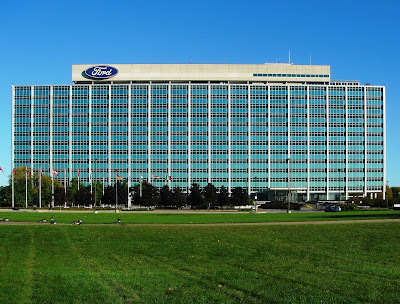Moody’s Cuts Ford’s Credit Rating to “Junk” – Testing Times for the Auto Industry?
Earlier this week it was announced that Moody’s had
downgraded Ford’s credit rating to Ba1, the highest rating level within Moody’s’
so-called ‘junk’ category, or in other terms its classification of
non-investment grade. There are a number of factors to consider, however, in
analysing the situation above and beyond the obviously negative headlines that
have accompanied this rating action.
Moody’s have been the first of the Big Three credit rating
agencies to downgrade Ford into this non-investment grade classification, with
S&P and Fitch maintaining Ford’s credit rating at two rungs above non-investment
grade. In the title to this post, the question is asked of whether there are
testing times for the automotive industry currently and, in providing their
reasoning for the downgrading of Ford’s credit rating, Moody’s appear to
believe that this is not the case: ‘The
erosion in Ford’s performance has occurred during a period in which global automotive
conditions have been fairly healthy’. Furthermore, in May, Moody’s upgraded
Ford’s rival Fiat Chrysler (to the same Ba1 status) on account of ‘strong
SUV and truck sales in North America’. It therefore appears that Ford is on
a downward spiral, but it is being suggested that the entire automotive
marketplace is suffering and is in the process of making significant changes to
the way the market moves forward. Industry onlookers have stated that the Ford
downgrade is ‘an
unfortunate inevitability of where we are in the cycle for the auto industry…
they have this massive restructuring underway and all the auto companies are
trying to figure out how to deal with autos 2.0’. This market refocusing
has been likened to ‘turning
around a battleship’ and, currently, that is what Ford is trying to do.
Apart from attempting to reduce the costs of modernisation –
Ford and Volkswagen have joined
forces to reduce the cost of R&D regarding the electrification of the
market – Ford have also begun a massive restructuring process. In June they
announced that up to 12,000
jobs would be cut in Europe, which followed news in May that 7,000 jobs
worldwide would be cut, representing 10% of its salaried workforce. These cost-cutting
strategies are part of an $11 billion overhaul that aims to protect Ford’s
position moving forward. However, this week’s announcement has seen opinion
become divided over whether that task has just gotten that much harder.
Analysts at Bank of America Merrill Lynch have suggested that investors
understand this downgrade to be ‘sufficiently
idiosyncratic’, although other investors are said to be concerned that companies
are happy to issue debt whilst being at the bottom of the investment-grade
classification – that fear is based upon the fact that worsening economic
conditions around the issuing companies may lead to the inability to service
those debts, which could lead to downgrades and a vicious cycle which could put
those issuing companies in real danger.
At the moment Moody’s is of the opinion that Ford, whilst
deserving of the downgrade, is in a healthy-enough position – its reserves
outweigh its debt obligations. However, the chances of Ford moving back into
investment-grade is considered slight by Moody’s, who have suggested it could
be a number of years before that happens. With Ford currently undertaking a
massive restructuring, the timing could not be worse – the potential impact
upon Ford’s borrowing capabilities could be massive (particularly as the
largest investors are usually regulatory-bound to only invest in
investment-grade bonds). Also, the external environment for American auto
manufacturers is certainly not stable, with the market
being used within the tariff war being waged between the US and China – an increase
on tariffs combined with a decreasing demand for their products means that the
US automotive market is in a potentially very precarious position indeed. In
summation, whilst some are declaring that the downgrade will potentially have
little impact, it is probably correct to suggest that the downgrade could not
have come at a worse time. If we also consider that the other members of the
Rating Oligopoly may be more inclined to reduce Ford’s credit rating now that
Moody’s has broken rank, the impact could be particularly significant. It is
imagined the next few months will see Ford attempt to convey the narrative that
the restructuring is on track and is, ultimately, having a positive effect.
Whether that is true or not remains to be seen.
Keywords – Ford, automotive, cars, business, trade war, @finregmatters





Comments
Post a Comment